AUDIENCE

The AUDIENCE Project started back in 2003 at the Laboratório de Sistemas Integráveis (LSI-EP-USP) and aimed at the research and development of technologies for sound immersion, production and reproduction of 2D/3D audio, with applications in multimedia, virtual reality, "home-theaters" and surround sound. The project ended in 2005 resulting in a multichannel cubic rig (8 loud-speakers) for the Caverna Digital (CAVE) at the University of Sao Paulo, delivering the first version of the software for auralization, which has been adapted for immersive virtual reality sound applications.
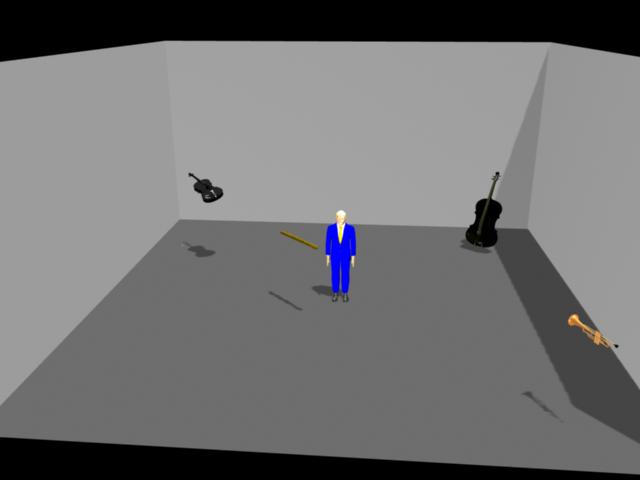 | 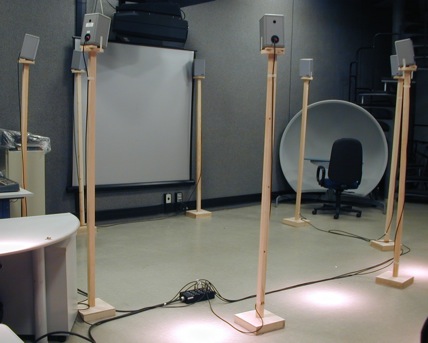 |
| Figura - Cena virtual com 4 instrumentos e ouvinte ao centro | Figura - Rig de auralização planar circular com 8 canais |
The original website of the AUDIENCE project can be accessed here, with detailed information about the system architecture, applicability, project phases, scientific production, team and partners.
The AUDIENCE system and the software AUDIENCE4Pd
AUDIENCE (AUDio Immersion ExperieNce by Computer Emulation) is the name of a system architecture for spatial audio processing proposed by Faria (2005) and also the name of a software library implementing key features for the chain of production, distribution and reproduction of 2D/3D audio based on this architecture.
The AUDIENCE system is based on an open architecture oriented to the modularization of the main processes of the audio chain, and the use of advanced techniques for encoding 3D sound field. The main component of this system is the software for auralization and audio-immersion AUDIENCE for Pd (AUDIENCE4Pd), which is a library of functions for Pure Data (Pd), a multimedia graphical programming platform for Windows, Linux and MAC OS X.
The figure below shows a Pd patch built with the library that makes acoustic rendering of a scene with two sound objects. In the example two parallel processing lines are constructed, one for each sound source on the scene, producing two audio programs in different modes: one for listening in stereo (2 channels) and one for quadraphonic audition (square, 4 channels).
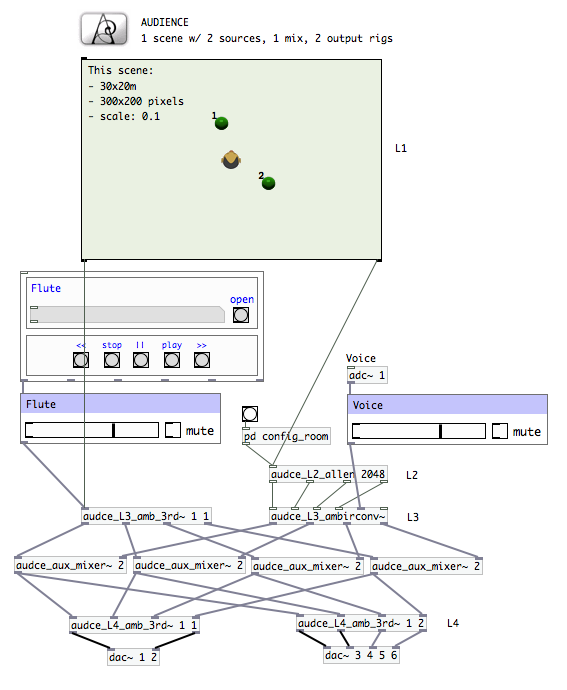
AUDIENCE was used in 2007 to spatialize the piece The Unanswered Question (Charles Ives, 1906) with 9 instruments (a string quartet, a woodwind quartet and a trumpet) and has been used as audio engine in applications for reconfigurable digital music, soundscape design, and as reference for new multichannel mixing systems oriented to sound scene.
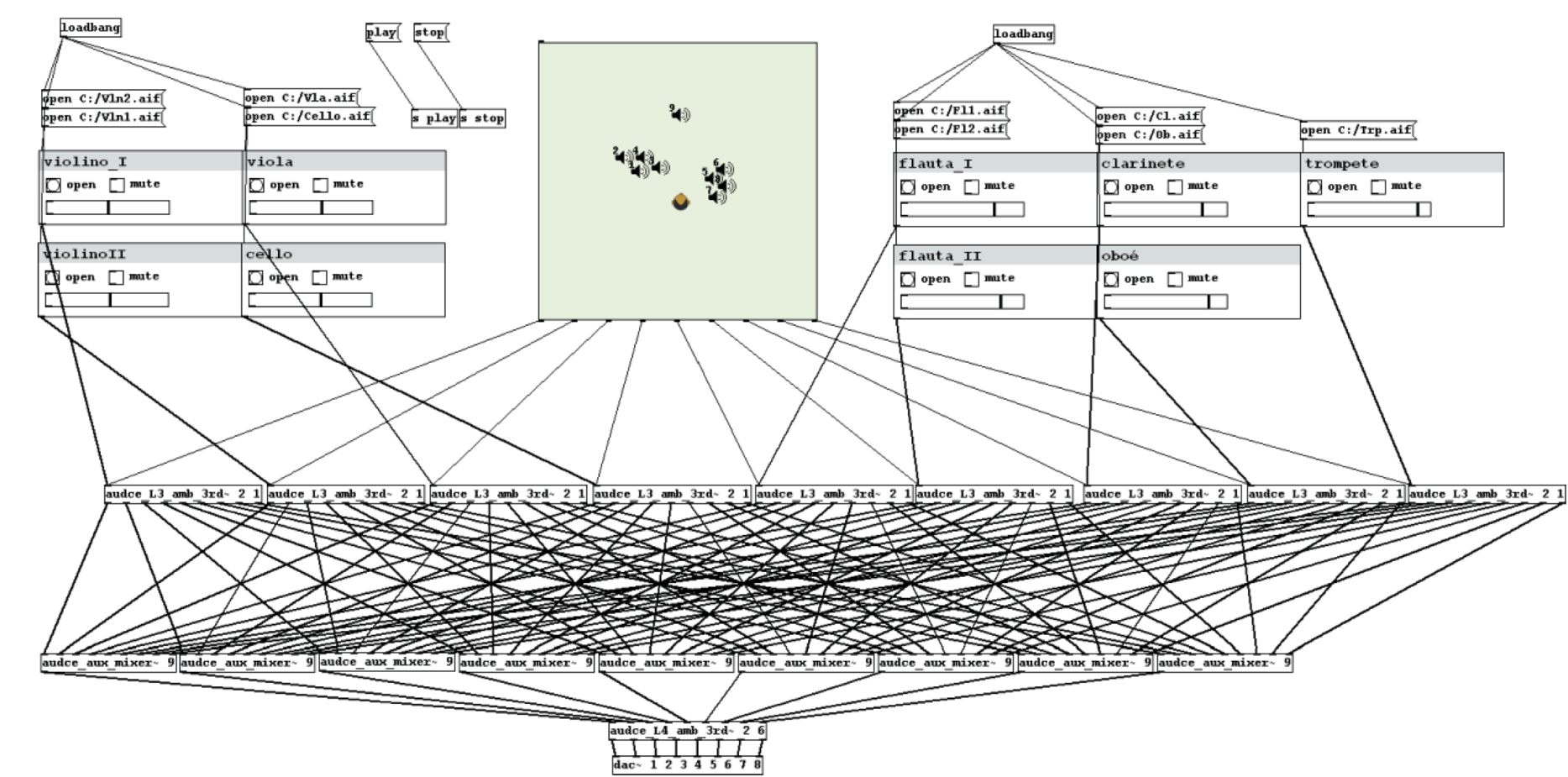
Figure - Spatialization patch for the piece The Unanswered Question, by Charles Ives
In 2007 we developed a prototype of a multi-channel amplifier in partnership with the company Sankya Electronics to meet the needs of auralization with 8 channel in spatial audio projects. The system meets the amplification of up to 8 channels with 30W/channel and was adapted to the specific needs of connectorization and operation. An article on this development was published in the proceedings of the 5th. Audio Engineering Conference of AES Brazil in 2007 (see article "Desenvolvimento experimental de amplificadores multicanal para auralização").
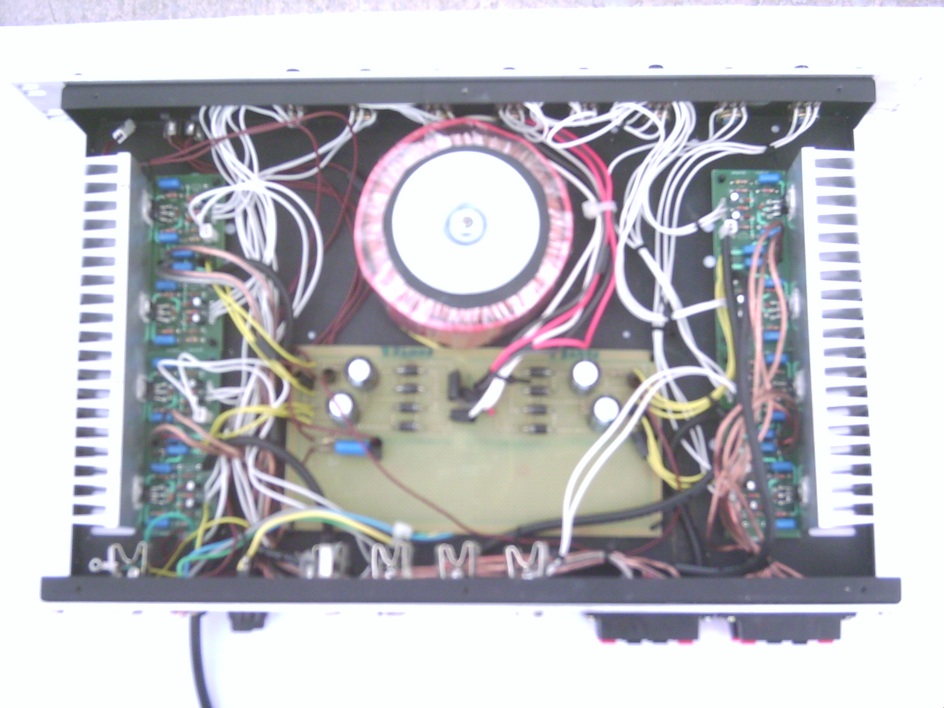
Figure - 8-channel analog amplifier for auralization
In 2009 we developed a portable version of the software, called AMob (AUDIENCE Mobile), which consists of a custom installation for the open-hardware OpenMoko cell phone, running Linux. The system can command auralization shows using the phone's GUI control via touch-screen. An article on this system was introduced in the 8th Audio Engineering Conference of AES Brazil and published in the proceedings (see article "An open auralization engine for mobile phones").
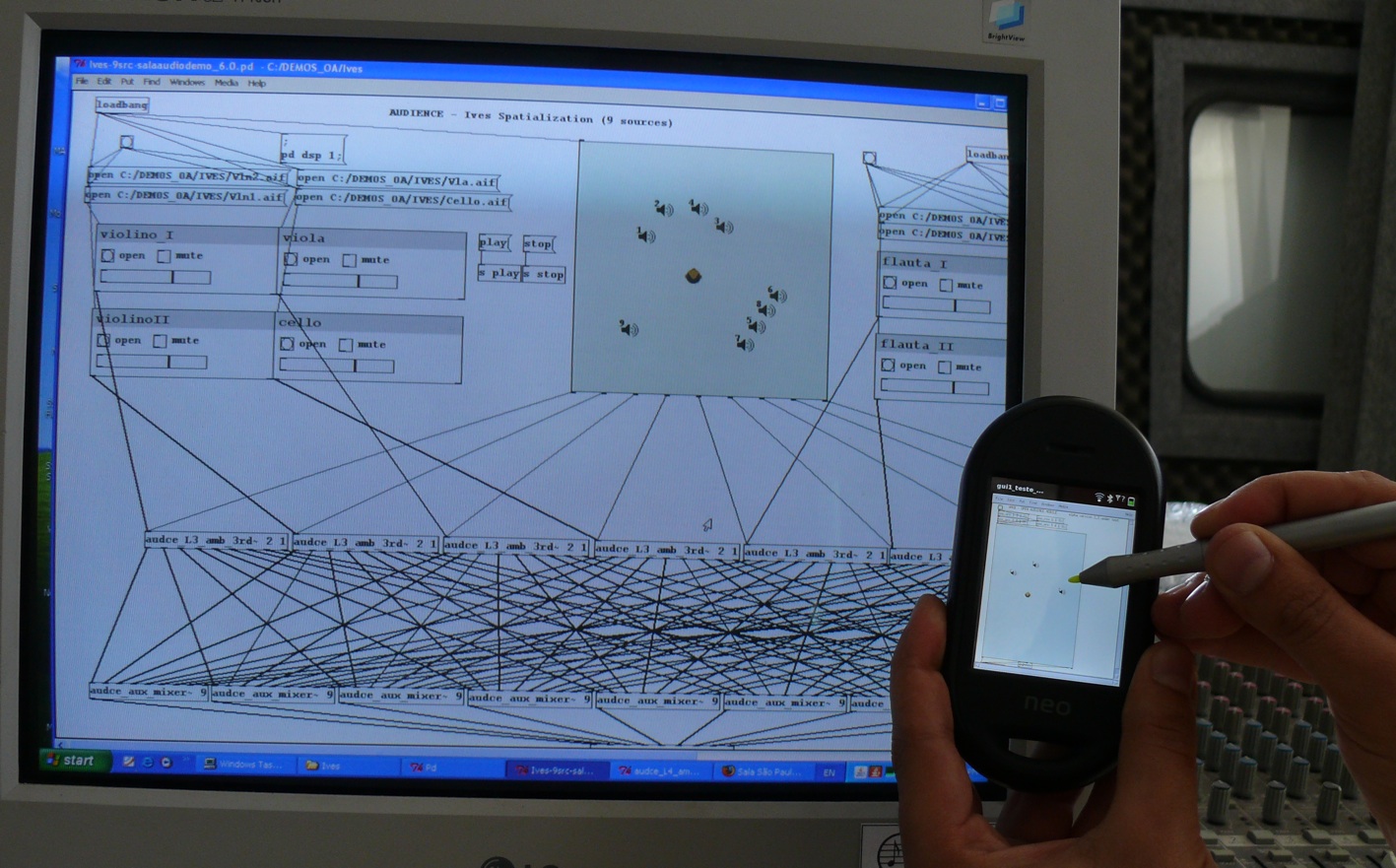
Figure - AMob running on a OpenMoko cell phone
This sub-project counted with the support of John Maddog Hall and the canadian company Koolu, which provided an OpenMoko for development and tests.
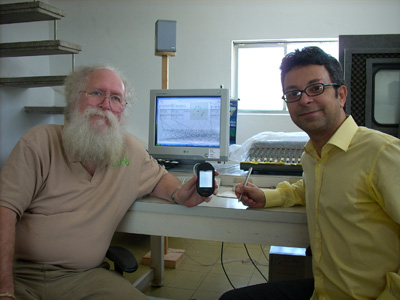 Figure - "Maddog" (on left with Openmoko) at NEAC lab
Figure - "Maddog" (on left with Openmoko) at NEAC lab
The AUDIENCE4Pd library includes several objects, abstractions and itens which are restrict or proprietary (e.g. codec MPEG-4 aacPlus) and it is not publicly available.
A free AUDIENCE
In order to provide a free version of this software, following the original project was proposed the OpenAUDIENCE project.
